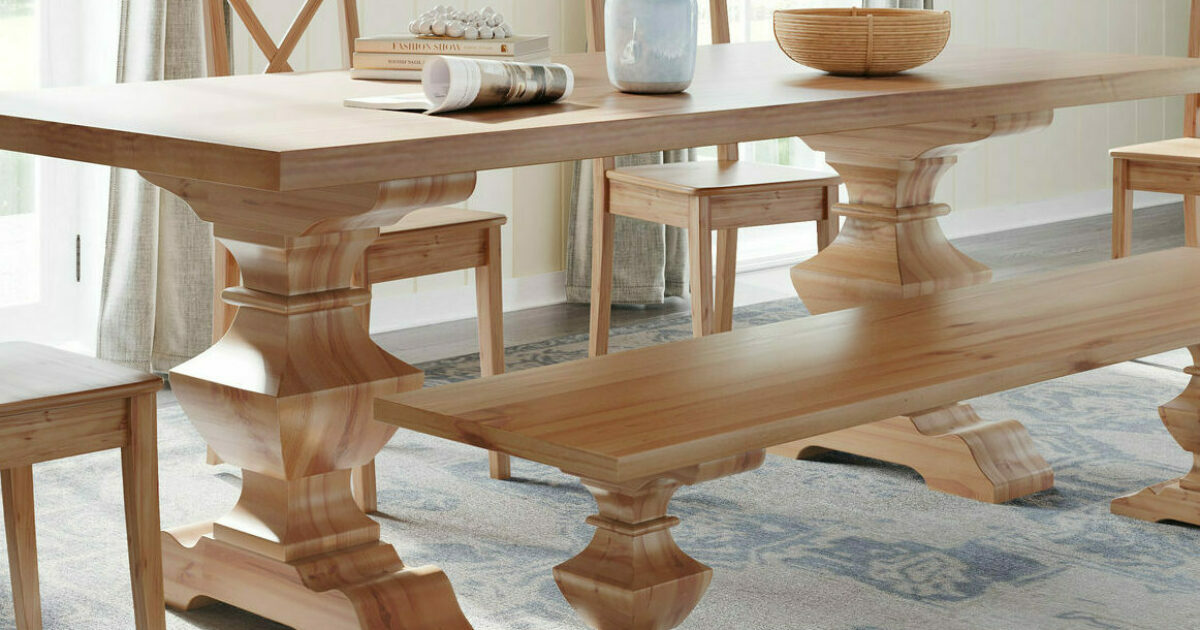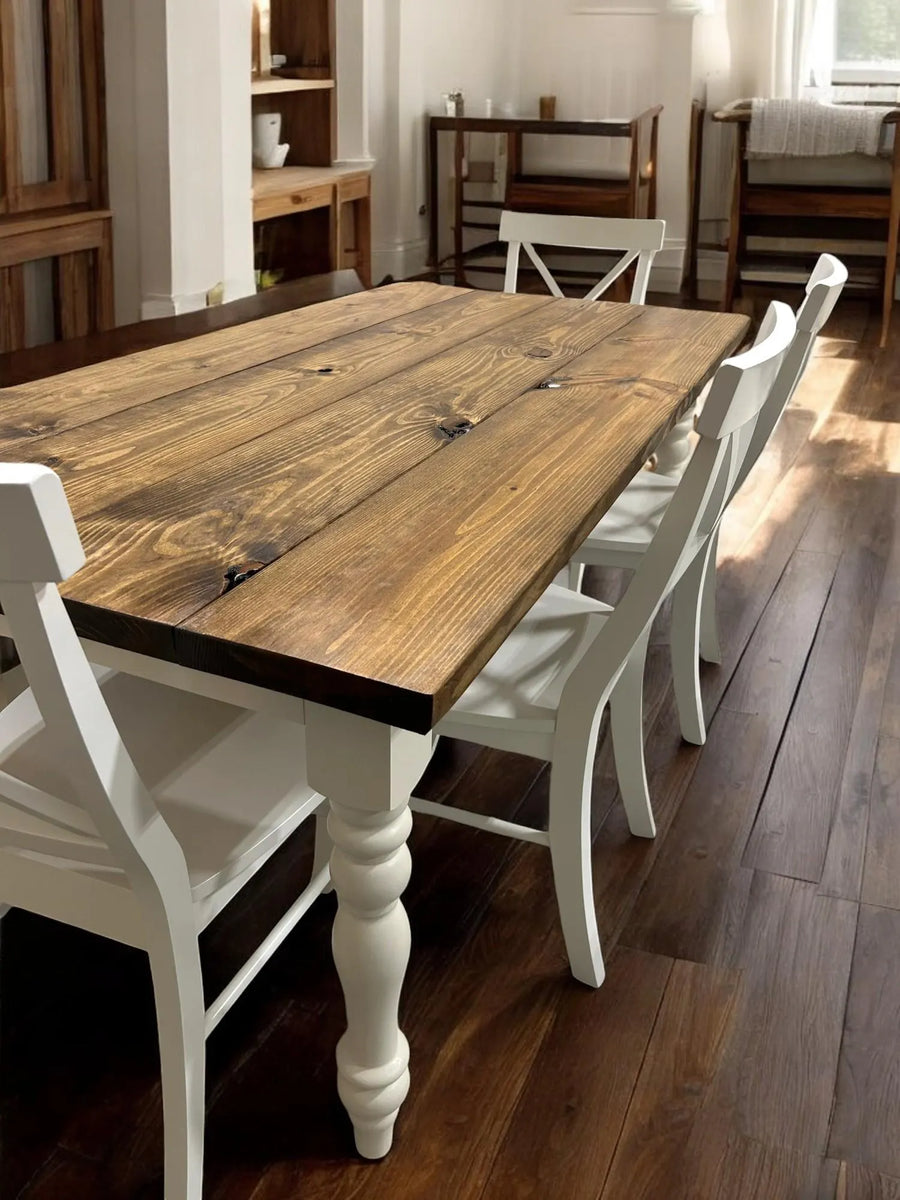Checking Out the Different Sorts Of Table Legs Wood for Your Eating Space
The choice of table legs wood can exceptionally affect both the aesthetic and useful top qualities of your dining room. Solid timber choices, such as oak and walnut, give a traditional appearance with unequaled longevity, while crafted wood alternatives offer cutting-edge layouts that resemble the splendor of all-natural grains. Furthermore, the growing pattern of recovered wood introduces a sustainable aspect that interest ecologically aware consumers. As we explore these various options, it ends up being necessary to take into consideration not just the visual charm however likewise the useful implications of each product option. What elements should lead your choice?
Solid Wood Options

Unlike crafted materials, strong timber is much less susceptible to bending and damage over time when properly maintained. Each item of solid timber is distinct, showcasing specific qualities that add to the beauty and character of the eating table.
In addition, strong timber can be finished in countless methods, ranging from all-natural oils to discolored surfaces, permitting homeowners to customize their furnishings to match their style. In summary, selecting solid wood for dining table legs not only ensures architectural stability however also improves the aesthetic appeal of the dining location, making it a worthwhile investment for any kind of home.
Engineered Timber Alternatives

Plywood, created from several layers of wood veneer, is stable and specifically solid, making it an excellent selection for eating table legs. Its split composition permits it to withstand modifications in humidity and temperature far better than conventional strong timber. MDF, on the various other hand, offers a smooth surface for paint or veneering, enabling developers to achieve a polished appearance while preserving structural integrity.
Particleboard, typically utilized in affordable options, offers decent strength and is light-weight, making it easier to deal with. However, it might not be as sturdy as plywood or MDF. It is vital to consider the intended use and wanted aesthetic when picking engineered timber alternatives. These materials not only improve the capability of dining areas yet additionally allow for higher style flexibility, guaranteeing that standard and modern designs can exist together sympathetically.
Reclaimed Timber Includes
Redeemed timber uses a special mix of sustainability and personality, making it a progressively prominent option for eating table legs. Sourced from old barns, manufacturing facilities, and various other frameworks, recovered wood embodies a history that brand-new products just can not replicate. Each item carries its very own tale, marked by unique imperfections, knots, and varying grain patterns, which add to a table's one-of-a-kind check these guys out visual charm.
Along with its visual beauty, recovered wood is an eco-friendly alternative. By repurposing formerly used materials, it lowers the need for new lumber, therefore assisting to save forests and minimize waste. This straightens with a growing consumer choice for sustainable techniques in furnishings.
Additionally, reclaimed timber is typically much more sturdy than recently harvested wood due to its age. The natural drying process that recovered wood undertakes lead to a denser and more powerful material, making it much less susceptible to bending and splitting. This enhances the long life of dining tables, enabling them to stand up to the roughness of daily usage.
Softwood vs. Hardwood
When picking dining table legs, recognizing the differences in between softwood and wood is vital for achieving both visual and useful objectives. Softwoods, stemmed from coniferous trees, such as ache and cedar, are characterized by their lighter weight and simplicity of control. They typically display an even more rustic appearance, making them appropriate for informal or country-style dining areas. Nonetheless, softwoods are typically much less sturdy than hardwoods, which can be a consideration for family members or those basics looking for longevity in their furniture.
On the various other hand, woods, sourced from deciduous trees like maple, cherry, and oak, are renowned for their thickness, toughness, and resilience. The intricate grain patterns and abundant colors of hardwoods provide a advanced and timeless charm, making them excellent for official eating settings. While woods tend to be extra expensive and larger, their resilience against deterioration commonly warrants the financial investment.
Ultimately, the selection in between softwood and hardwood for dining table legs must straighten with your design vision, use needs, and budget, making sure that your dining area shows your individual style while remaining functional gradually.

Therapies and coatings
The aesthetic allure and long life of dining table legs can be considerably boosted via various surfaces and therapies. These processes not just shield the wood from damage however additionally elevate its look, allowing it to complement varied interior designs.
One common treatment is discoloring, which passes through the wood and boosts its all-natural grain while adding shade. Stains offer a rich, classy look, making it possible for home owners to match their furnishings with existing design. Alternatively, clear coatings such as polyurethane or varnish produce a protective layer without altering the wood's initial tone, making sure sturdiness against wear and tear.
Furthermore, all-natural oils, like tung or linseed oil, nurture the wood and offer a refined sheen, all while being eco-friendly. These oils permit the surface area to take a breath, protecting against moisture buildup and possible bending.
For those looking for a rustic beauty, troubled or weather-beaten coatings can be put on produce an aged appearance, adding personality to the piece. Inevitably, the selection of surfaces and treatments depends on personal choice, preferred looks, and the particular wood kind, making it vital to think about these factors when picking table legs for your room.
Conclusion
Finally, the choice of table leg materials considerably affects content both the functional and visual facets of a dining area. Strong woods, engineered options, and reclaimed options each deal distinctive advantages, satisfying different choices and needs. Recognizing the differences in between woods and softwoods, along with proper coatings and therapies, enables informed decision-making. Eventually, the option of timber kind need to straighten with desired style, longevity, and environmental considerations, improving the overall eating experience.
The selection of eating table legs wood can exceptionally affect both the aesthetic and functional qualities of your eating area - Dining Table Legs Wood. Strong wood options, such as oak and walnut, provide a timeless appearance with unequaled toughness, while crafted timber alternatives use innovative layouts that imitate the richness of natural grains. Strong wood provides a classic quality that can elevate the overall layout of an eating room. Each item of solid timber is one-of-a-kind, showcasing private qualities that add to the beauty and character of the dining table
In addition, recovered wood is commonly much more resilient than recently collected wood due to its age.